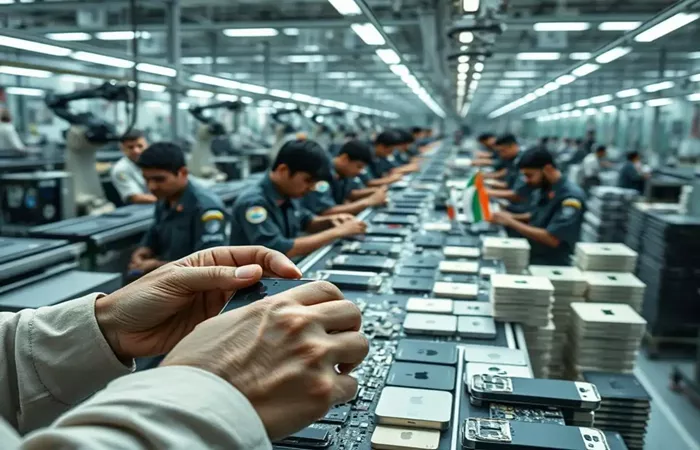India has long hoped to become the world’s next big factory, replacing China as the global center for manufacturing. Recently, Apple’s decision to move much of its iPhone production from China to India seemed to boost this dream. However, a new trade deal between the United States and China may slow down India’s progress.
Last week, the US sharply reduced tariffs on Chinese goods from 145% to 30%, nearly matching the 27% tariff on Indian products. This change came after a trade agreement in Switzerland between Washington and Beijing. Experts now worry that some companies might stop moving their factories to India or even return to China.
Ajay Srivastava from the Global Trade Research Institute in Delhi says that while India might keep its low-cost assembly jobs, growing higher-value manufacturing is at risk.
Before the deal, India seemed well-positioned to take advantage of companies wanting to move out of China. Economist Shilan Shah from Capital Economics pointed out that 40% of India’s exports to the US are similar to those from China. Indian exporters were already gaining new orders, reaching a 14-year high in a recent survey.
Japanese brokerage Nomura also noticed that sectors like electronics, textiles, and toys were starting to benefit from companies shifting supply chains away from China.
Still, some believe that the US and China will continue to separate their economies over time. This could help India in the long run. India’s government under Prime Minister Narendra Modi is also more open to foreign companies than before, which might attract more investment.
India is working on a trade deal with the US, while it recently signed an agreement with the UK that lowered taxes on products like whiskey and cars. These moves show that India is willing to make deals to boost trade.
But India faces several challenges. China remains a strong competitor, and other Asian countries like Vietnam are also attracting businesses. Economists say India needs to improve its business environment to truly take advantage of the opportunity.
For years, India’s manufacturing has struggled. Its share of the economy has stayed around 15% for two decades. Programs like the Production Linked Incentive (PLI) have had limited impact. India’s think tank, Niti Aayog, admits that countries like Vietnam and Thailand have done better because of cheaper labor, simpler taxes, and free trade agreements.
Another problem is India’s dependence on China for raw materials and parts, especially in electronics. Ajay Srivastava explains that India only earns about $25 per iPhone assembled there, while Apple makes over $450 from each phone sold in the US. Simply assembling iPhones in India without making more parts locally won’t bring big economic benefits.
The jobs created by these factories tend to be low-skilled. Unlike Nokia, which helped build a local supplier network in Chennai, many smartphone makers mainly import parts and seek lower tariffs. In some cases, companies get more money from government subsidies than they invest in local production.
There are also worries that Chinese exporters might use India to send goods to the US, which could hurt India’s goal of building its own industry. India’s economic advisers have suggested attracting more Chinese factories, but experts warn this could stop India from developing its own manufacturing skills.
In short, despite headlines about Apple and trade deals, India still has a long way to go to become a global factory. Experts urge the government to cut production costs, improve logistics, and make business rules clearer.
“The US-China trade reset is just damage control, not a lasting solution,” said Srivastava. “India needs to focus on long-term growth or risk being left behind.”
Read more:


